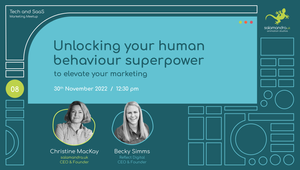
Launching Products: How to Access The Consumer World

Launching a new product into a market can be a real challenge – whether you’re going straight to end consumers or marketing to a channel, you need to convince buyers to invest in your product. The quickest way to do that is actually to stop focusing on the product – bear with us here.
You’ve designed, developed, and manufactured a product, and the impressive technical features that make it unique to your brand are understandably what you want to shout about – but to your consumers, they may just be confusing details. Ultimately when your consumer makes a purchase, they’re not buying that drill with 13mm twist capacity, they’re buying that hole in the wall that they’ve been meaning to make for 6 months.
Don’t get us wrong, the features that make your products outstanding are important, and many consumers do look further into technical specifications once they’re through the door. But that initial step in the marketing process that convinces buyers to look closer, is all about helping them to visualise your product in their world.
Step one – give consumers something to look at:

Before your consumers can start imagining your products in their lives, you need to give them something to visualise. Depending on how far down the manufacturing process you are – in development, prototyping or fully realised products – there are various solutions to this. If you have a fully realised product and want to show it in use, film or photography provides a great option. However, if you are still in development or only have a prototype, but want to start getting traction with investors and buyers, CGI product visualisation might be for you. Additionally, the CGI method allows for product animations – such as an exploded view (as above), or smooth transitioning between multiple versions of the product, such as different material finishes. With innovative technologies such as AR and VR predicted to play such a prevalent role in 2018 marketing, CGI visualisation provides a perfect gateway into moving your physical products into the digital space.
Step two – build the product into the consumer’s world

Now you have a digital visualisation of your products you can really start to help your buyers see how the product can improve their world. A very literal interpretation of this is the interesting AR digital project from Ikea, that allows consumers to virtually ‘place’ products into their homes, and to get a feel of the product within their own spaces. With this technology booming and new hardware and software adapting to cater to it, this approach is something we’re likely to see more of in the future. In more traditional marketing spaces, infiltrating the consumer’s world is all about knowing who they are, and what their pain points are – an ever more possible task with the advanced CRM systems available today. With this information, content can be created that resonates with audiences; whether this is through clever targeted messaging, or through imagery designed to appeal to certain consumers, you can place your product squarely in line with their aspirations and goals.


Step three – emphasise the benefits, not the features
Now you’ve got consumer’s attention and put your product visually in front of them – what are you selling? You probably want to start explaining all the amazing features, and the record-breaking stats around your product. But let’s break it down – say your product is a camera with a particularly long battery life, what is the advantage of this for the end consumer? Does it mean that they can get the shoot done in one go, where previously they would have had to keep multiple batteries charged up in reserve? Visually illustrating the benefit for the end consumer will allow them to relate to the product offering much more effectively. Here’s a successful example of this – Nike never even show a product in this advert – instead, they focus on the human aspect and let the consumer conclude that with the help of Nike products, they too might be able to achieve their goals.
Step four – don’t expect the big bang – create a slow burn
Unless you’re Apple or Microsoft you’re probably not going to get a big bang when you first release your product, especially if it’s a new brand. Instead, you should focus on the slow burn, get your new targeted, visualised content out there in the digital space, and then work socially to get your product in front of influencers. There is an appetite today for a more genuine approach – digital consumers are savvy and usually suss out a paid review, whether you admit it or not. Instead, you should be up front, and respect that every single consumer who posts about your product online is a brand ambassador. A genuine review from a respected member of an online community will go a lot further than a top line ‘paid for’ review from a ‘celebrity’ figure. The best thing you can do from your end is to ensure you keep your finger on the pulse and respond to comments about your product online – positive or negative, and to keep releasing content to promote the product. Content like video and animation…
Step five – promote features after launch with video/animation
Now your product is out in the world, you can finally shout about those features because there will actually be potential customers looking to know more about your product. A fantastic way to do this is through video or animated content, using motion graphics to highlight features in an engaging way. You can also use video footage of experts talking about your product (although you need to be sure they are confident and natural on camera) and integrate graphics to explain what they’re saying. Another amazing innovation is the increasing capability to embed 3D models in browser – and to add interactive elements to them – check out the successful 3D visualisation above from Adidas, posted on Sketchfab (have a play – you can move 360 degrees around the product) – this is definitely something we see taking off on social media in the coming year.
So, there you have it, some top tips for launching a product in a way that will engage with your consumers, allow them to visualise using your product in their lives, and then provide them with exciting and innovative content to find out more about your offering.
If you want to chat about how to launch your product or find out more about the methods discussed here, we’re always happy to chat – just get in touch here.










